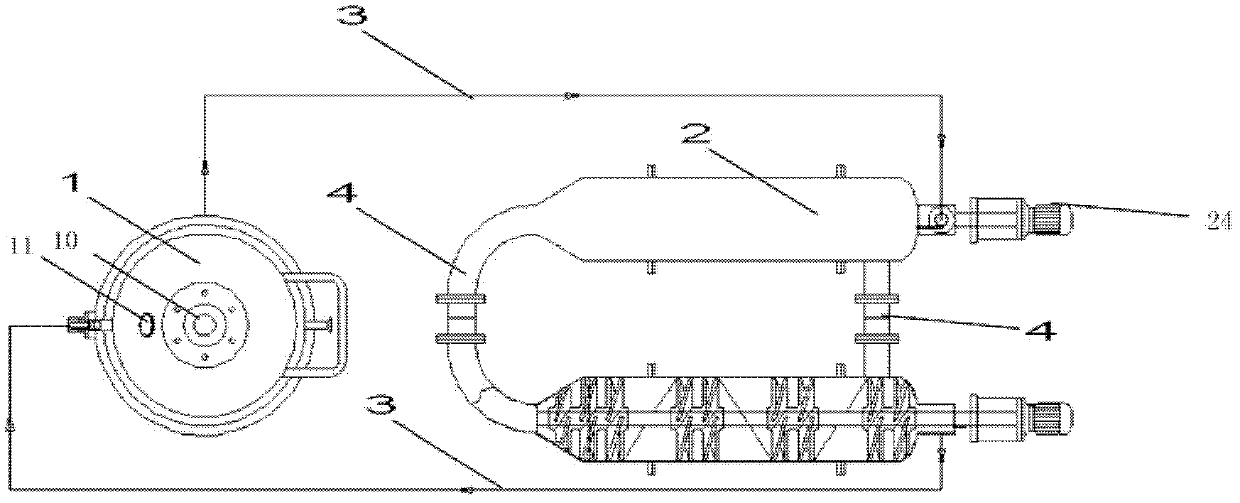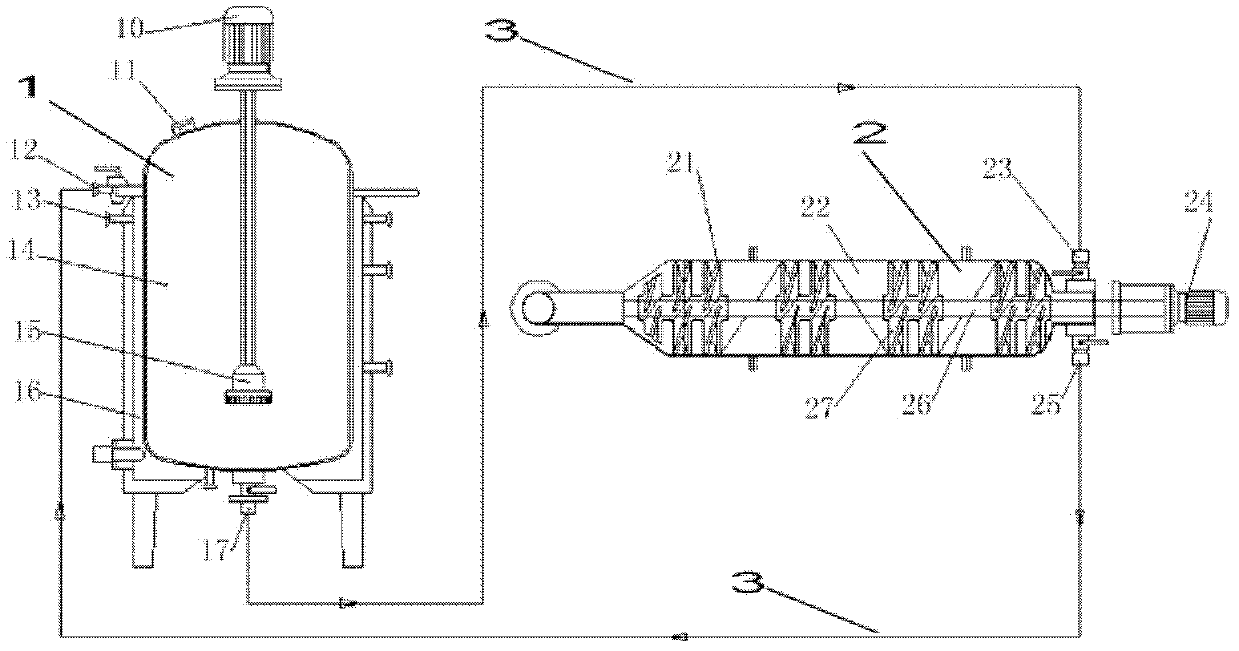High-capacity double-systematic-circulation cellulose enzymolysis reactor and its application
A cellulase and reactor technology, applied in the direction of enzyme production/bioreactor, bioreactor/fermenter combination, bioreactor/fermenter for specific purposes, etc., can solve the problem of short time-consuming and difficult enzymatic hydrolysis process , Low enzyme consumption, etc.
- Summary
- Abstract
- Description
- Claims
- Application Information
AI Technical Summary
Problems solved by technology
Method used
Image
Examples
Embodiment 1
[0125] enzymatic saccharification
[0126] use figure 1 The enzymatic saccharification device shown performs enzymatic saccharification according to the following steps:
[0127] 1. Steps:
[0128] 1.1 The slurry solution after pretreatment is prepared into a 100L solution with a substrate concentration of 6%.
[0129] 1.2 Dissolve an appropriate amount of citric acid and trisodium citrate in the solution, and adjust the pH value to 4.8.
[0130] 1.3 Heat the jacket of the two-body cycle enzymolysis reactor to 50°C;
[0131] 1.4 Add 75% of the total amount of cellulase (enzyme can be liquid enzyme and / or solid enzyme) into the solution, and position the reaction start time at 0 o'clock at this time. Wherein the total consumption of cellulase (including endoglucanase, exoglucanase and β-glucosidase) is 1000IU / ml. The slurry solution is poured into the first reaction tank at a speed of 600rpm, and from the first reaction tank into the second reaction tank at a speed of 50rp...
Embodiment 2
[0141] use figure 1 The enzymatic saccharification device shown performs enzymatic saccharification according to the following steps:
[0142] 1. Steps:
[0143] 1.1 The slurry solution after pretreatment is prepared into a 100L solution with a substrate concentration of 6%.
[0144] 1.2 Dissolve an appropriate amount of citric acid and trisodium citrate in the solution, and adjust the pH value to 4.8.
[0145] 1.3 Heat the jacket of the two-body cycle enzymolysis reactor to 50°C;
[0146] 1.4 Add 75% of the total amount of cellulase (enzyme can be liquid enzyme and / or solid enzyme) into the solution, and position the reaction start time at 0 o'clock at this time. Wherein the total consumption of cellulase (including endoglucanase, exoglucanase and β-glucosidase) is 900IU / ml. The slurry solution is poured into the first reaction tank with a rotating speed of 1500rpm, and from the first reaction tank into the second reaction tank with a rotating speed of 120rpm. All the ma...
Embodiment 3
[0156]use figure 1 The enzymatic saccharification device shown performs enzymatic saccharification according to the following steps:
[0157] 1. Steps:
[0158] 1.1 The slurry solution after pretreatment is prepared into a 100L solution with a substrate concentration of 6%.
[0159] 1.2 Dissolve an appropriate amount of citric acid and trisodium citrate in the solution, and adjust the pH value to 4.8.
[0160] 1.3 Heat the jacket of the two-body cycle enzymolysis reactor to 50°C;
[0161] 1.4 Add 75% of the total amount of cellulase (enzyme can be liquid enzyme and / or solid enzyme) into the solution, and position the reaction start time at 0 o'clock at this time. Wherein cellulase is acid cellulase, and the total consumption is 1200IU / ml. The slurry solution is poured into the first reaction tank at a speed of 2800rpm, from the first reaction tank into the second reaction tank at a speed of 250rpm. All the materials carry out two-body circulation between the first reactio...
PUM
| Property | Measurement | Unit |
|---|---|---|
| diameter | aaaaa | aaaaa |
| molecular weight | aaaaa | aaaaa |
| molecular weight | aaaaa | aaaaa |
Abstract
Description
Claims
Application Information
 Login to View More
Login to View More - R&D
- Intellectual Property
- Life Sciences
- Materials
- Tech Scout
- Unparalleled Data Quality
- Higher Quality Content
- 60% Fewer Hallucinations
Browse by: Latest US Patents, China's latest patents, Technical Efficacy Thesaurus, Application Domain, Technology Topic, Popular Technical Reports.
© 2025 PatSnap. All rights reserved.Legal|Privacy policy|Modern Slavery Act Transparency Statement|Sitemap|About US| Contact US: help@patsnap.com



